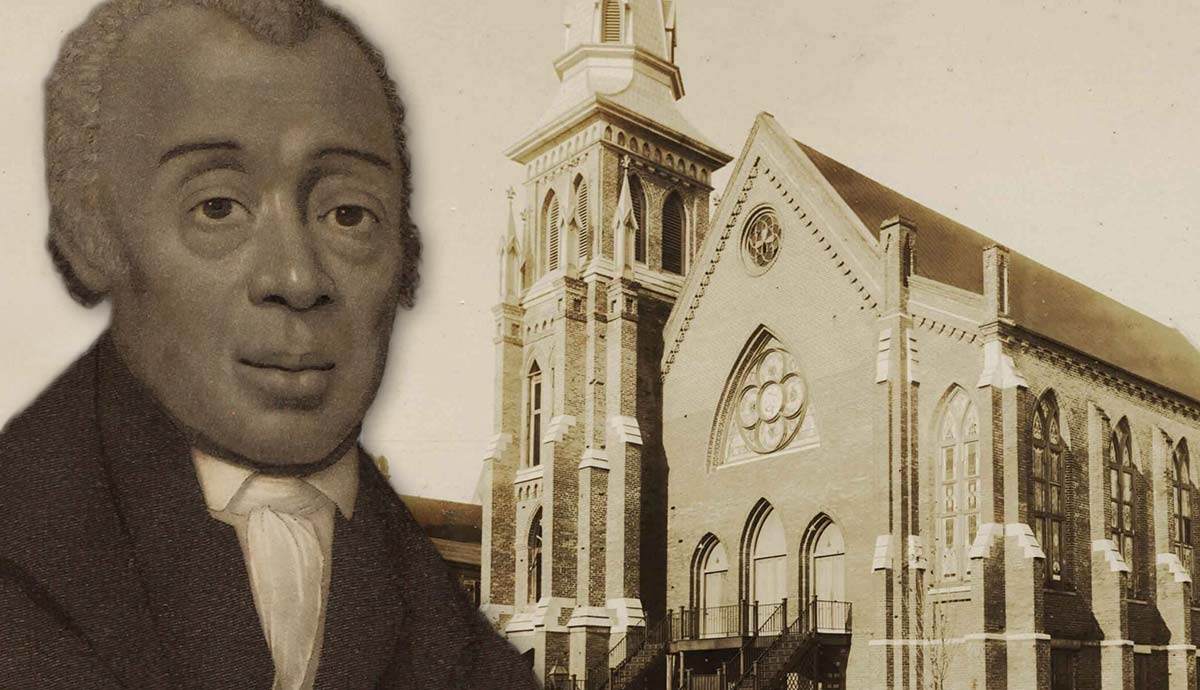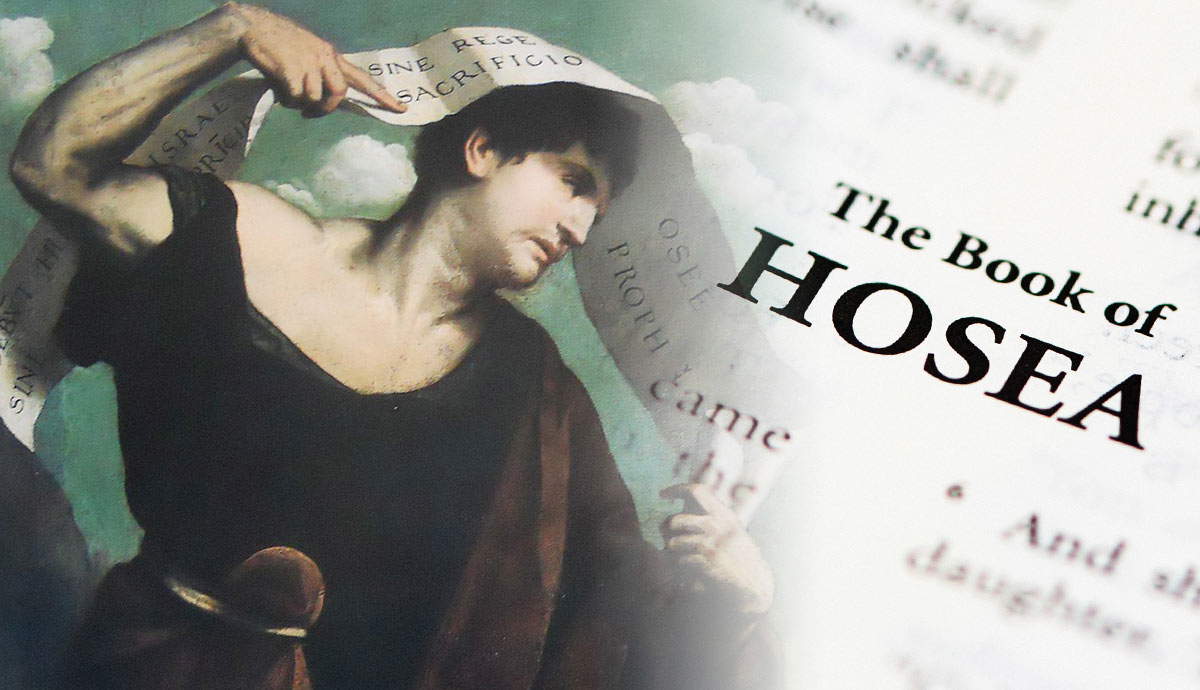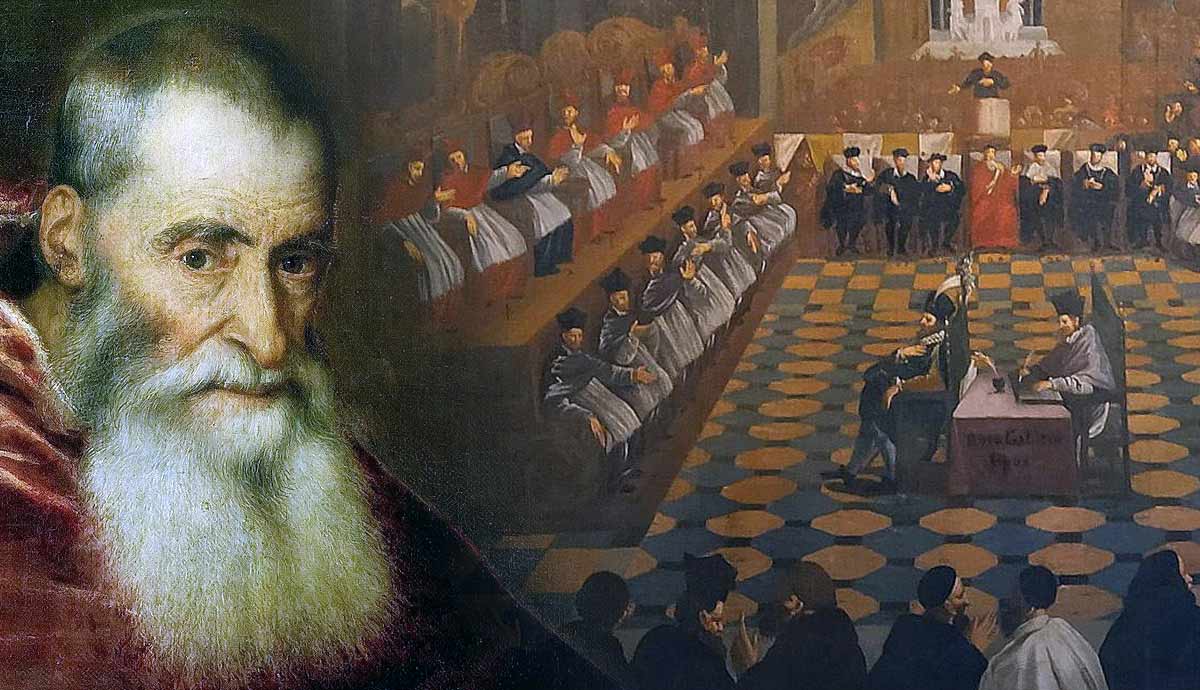
On June 17, 2015, members of Mother Emanuel A.M.E (African Methodist Episcopal) Church gathered for a prayer service. Among them was Dylan Roof. After silently attending the service, he opened fire, killing nine. This tragic event reflects deep-rooted racial tensions dating back to slavery’s end. The AME Church, founded in 1816, has long championed Black equality and the fight against white supremacy. From aiding the Underground Railroad to post-emancipation upliftment efforts, it has stayed a pillar in the struggle for racial justice, as seen in its historical journey.
A Prophet is Born

In the early hours of a crisp, cold Pennsylvania morning on February 14, 1760, the editor of the Pennsylvania Gazette worked hard to finish producing the rest of the day’s newspapers. In keeping with tradition and reflecting the importance of Protestant Christianity in what was still at that time a colony of Great Britain, the Pennsylvania Gazette published a single Bible verse on its front page every single day. On the morning of February 14, the verse was from Isaiah 62:1 and read “For Zion’s sake, I will not hold my peace, and for Jerusalem’s sake I will not rest, until the righteous thereof go forth as brightness, and the salvation thereof as a lamp that burneth.”
That same day, a slave woman owned by Benjamin Chew, a Quaker lawyer, gave birth to a son whom she named Richard. While most, including the child’s own mother, assumed he would spend the rest of his life in the service of his enslaver and his later heirs, the boy was destined for far greater endeavors. In 1787, he would go on to start the Free African Society, which promoted unity and spiritual guidance among both the enslaved and free Black community in Philadelphia.
The Free African Society would ultimately grow into its own denomination of Protestant Christianity known as the African Methodist Episcopal Church, A.M.E for short. As the early morning darkness gave way to the light of a new day on February 14th, no one would ever guess that the baby born that very day would construct a life that fell in line with the quote from Isaiah published in the Pennsylvania Gazette the morning of his birth.
A Unique Childhood

As the years passed, and the baby turned into a teenager, it was clear that every aspect of Richard’s life was to be unusual and original. Richard had no last name, while many slaves would assume the last name of their enslaver, Richard preferred to go by “Negro Richard.” Richard was sold by Benjamin Chew to Allen Sturgis in 1777 at just 17 years old. Sturgis, a religious man himself, taught Richard how to read and write so he may learn the word of God. That same year, Richard declared himself born again in the Christian faith after attending a traveling religious revival on the outskirts of the Sturgis plantation in 1779. Something about this service caught Richard’s attention.
Soon after, he converted to Methodism. Two years after Allen’s conversion to Methodism, Sturgis attended another revival. The theme that evening focused on self-righteousness. One verse struck deep within Allen, Daniel 5:27: “Thou art weighed in the balances, and art found wanting.” After this meeting, Sturgis went back to his plantation having decided that he was to “strike a deal” with his slaves for them to be able to buy their freedom.
By 1780, Richard struck a deal with Sturgis that he would pay 2,000 dollars over the course of the next five years to obtain his freedom. In response to this kindness, Richard adopted the last name “Allen.”
The Free African Society

Members of the African Methodist Episcopal faith trace their origin to Absolom Jones but Allen led the congregation away from the Methodist Episcopal faith after refusing to accept segregated services at St. Georges in Philadelphia. In truth, this became the birth of the Free African Society which gave rise to the African Methodist Episcopal denomination. While Allen wished the Free African Society to serve as an organized worship group solely for the spiritual enrichment of African Americans, he also wished for his new society to remain under the governing body of the Methodist Church.
With this intention in mind, Allen began asking for donations to build a house of worship for his “African church.” Allen was not surprised at the rebuttal he received from the Methodist Church as they “refused to supply a minister” to serve as a Bishop for a separate African-only body of the faith.
By the early months of 1794, the Free African Society was a well-oiled machine. Membership, volunteering, and dues went to helping the Black community in Philadelphia and elsewhere. Traditional education, healthcare, buying food for those in need, teaching children trades so that they could earn a living, and donating money to people who were along the Underground Railroad were all part of Richard Allen’s societal migration.
If one viewed the early months of 1794 as a sign of how the year would continue for Allen, the Free African Society, and the people of Philadelphia as a whole, the future was bright. However, a dark nemesis of despair was stalking the streets and alleyways of Philadelphia — yellow fever.
Heroes During the Fever

By September, the mosquitoes who called various local waterways home had hatched and began infecting the residents of Philadelphia to the extent that city officials had declared an outbreak of yellow fever. While the white inhabitants of Philadelphia fled the city, Black citizens remained as many could not afford to uproot their lives for an undetermined amount of time.
The Mayor of Philadelphia called the Black citizens of the city to action, imploring them to offer their services in any way possible. This came from the misconceived notion at the time that Black people were somehow immune to the fever.
Nonetheless, the Free African Society stepped up and offered its services to the city’s residents. Members began working in hospitals, distributing food and some braved the task of moving infected bodies to a mass graveyard. Out of the death and destruction of yellow fever, the Free African Society rose from the ashes, born anew. Having experienced an influx of funds from the city for their efforts during the fever, the group grew to such heights that its original meeting house became St. Thomas’s, a solely Episcopal denomination of Protestantism, on July 17, 1794.
Birth of the A.M.E Church & Doctrine

A few months after Jones founded St. Thomas’s, Richard Allen opened the doors to Bethel A.M.E Church in Baltimore, Maryland. From Bethel and St. Thomas’s, many other African-only churches began populating the cities of Philadelphia and Baltimore.
By 1816, Allen decided it best to call the leaders of these various churches together. The delegates met in Philadelphia in April and began airing out their various grievances. Most of which were discrimination tactics used by their white brethren. Allen presented the possibility of unification for these African churches. It was voted upon and decided that “the people of Philadelphia, Baltimore, &c. &c., should become one body, under the name of the African Methodist Episcopal Church” (Allen, 1833, p.21).
Allen and other leaders recognized that before the group met, an adoption of doctrine and discipline must be done to show strength and unity. Three main tenets were to serve as the base for the newly formed A.M.E Church, “Acts of Love, Acts of Hope, and Acts of Faith.”
Acts of Faith revolved around a parishioner’s recognition of God being “my Sovereign Lord” and the fact one must “help me to love and praise thee with godlike affections, and suitable devotion.” The Acts of Faith were not a revolutionary ideology as they are representative of the time. The Acts of Love and Hope, however, spoke to the unity within the A.M.E Church, something that persists within the Black community today, and foreshadowed the efforts the A.M.E Church would take up from the former Free African Society in the fight for freedom and black equality.
Pre-Emancipation Efforts

Born in a meeting house in Philadelphia in 1816 as a small amalgamation of various Black churches in the area, the A.M.E Church grew to a group of 20,000 souls by 1856 (Thompson, 1993, p.21). In keeping with their Acts of Love and Hope, as well as an abolitionist ideology from their forebears in the Free African Society, African Methodist missionaries recognized a cultural and spiritual connection with the slaves of South Carolina and chose to focus their efforts on that very region. A.M.E. missionaries recognized the symbolism that came with the word “freedom” and began displaying this idea at every gathering in the South.
Despite facing violence from the city’s white population, the doctrine of freedom resonated with the Black population of the large Antebellum metropolitan city of Charleston where in 1818, Morris Brown created the Mother Emanuel A.M.E Church. The first in the South, Mother Emanuel would fight from the beginning for Black equality.
While the church was still actively involved with aiding groups like stations along the Underground Railroad, the Free African Society and the organized church had quite different methods for promoting freedom. The church believed this could be conducted by enriching both slaves and formerly enslaved people with the word of God while taking a lesser role in direct efforts of manumission.
Post-Emancipation Efforts

The efforts of the church, however, did not end with the emancipation of African Americans. In the eyes of the A.M.E Church, freedom after emancipation meant the freedom to “be educated, to be employed and to move from place to place” (Lincoln, 2005, p.4). The church entered a new stage of life, and an influx of missionaries came to Charleston even before the war ended in mid-February after the city had been abandoned by Confederate forces.
Church missionaries spent the next three months in the city and surrounding areas spreading the word of freedom while “expanding the organizational outreach of the church” and creating what would be a lasting foothold in the city. One building that would serve as their base of operations was one of the only existing A.M.E churches in Charleston, a structure that had existed since 1817, Mother Emanuel.
That same church was attacked by Roof in 2016. From this meeting house, the church’s efforts sprouted, and it was here that the undertakings of the church shifted towards societal uplift, education of newly freed slaves, registering to vote, providing healthcare, and during the 20th century, legal aid for racial injustice and lynchings.
A Continued Fight

One would assume with the end of the Civil Rights Movement, the church would have had another shift in its approach toward its congregation — focusing on spiritual vs social enrichment of the African American community. However, with the persistence of racially motivated atrocities, the church must play a dual role in the Black community even in today’s world, providing a haven for those who experience persecution. As we have seen, the church has been the center of safety for African Americans, it aided runaway slaves and provided education, food, and shelter in times of trouble.
Unfortunately, white supremacists have recognized the interconnectedness between the Black community and their church. How then did the church cope when an event caused trauma to occur within the walls of the sanctuary during the mass shooting at Mother Emanuel in 2016? It persists onward fighting the same fight for social equality that began in 1787 when Richard Allen took his congregation and left his segregated church in search of equality and safety that unfortunately has not been met centuries later.
Bibliography
Allen, R. (1833). The Life, Experience, and Gospel Labours of the Rt. Rev. Richard Allen. To Which is Annexed the Rise and Progress of the African Methodist Episcopal Church in the United States of America. Containing a Narrative of the Yellow Fever in the Year of Our Lord 1793: With an Address to the People of Colour in the United States.
Dickerson, D. C. (2020). The African Methodist Episcopal Church: A History.
Lincoln, C. E. (2005). The Black Church in the African American Experience. Durham, NC: Duke University Press.
Thompson, V. B. (1993). “Leadership in the African Diaspora in the Americas Prior to 1860.” Journal of Black Studies








